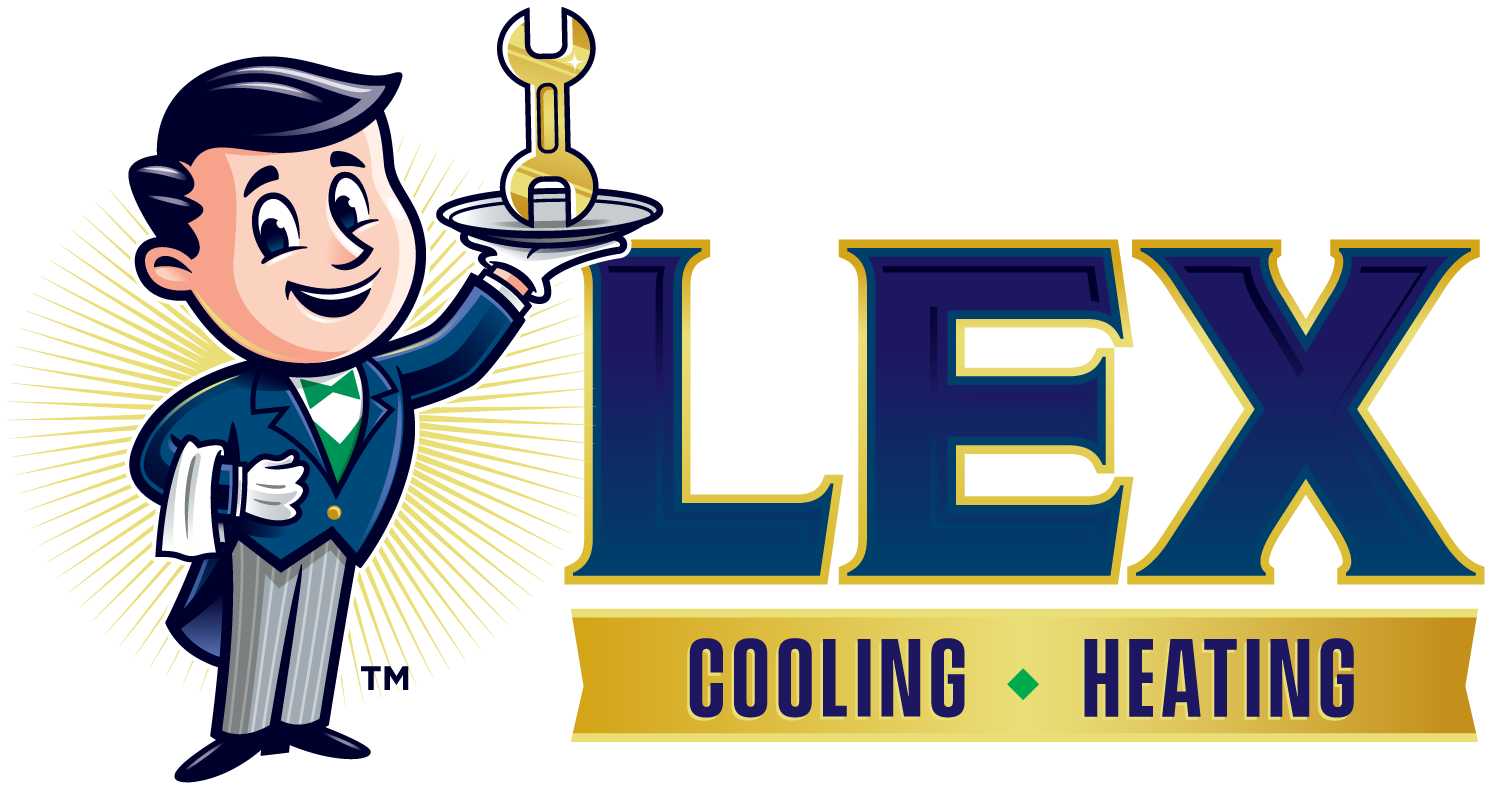Heat Pump Installation and Repair in Tyler, TX
Home » AC Services » AC Installation » Heat Pump Services
Our Services
Heat Pump Installation Services in Tyler
At Lex Air East Texas, we understand the importance of a reliable heating and cooling system, especially in the unpredictable Texas weather. That’s why we offer heat pump installation and repair services in Tyler, TX, and the surrounding areas. With our team of skilled technicians and commitment to quality service, we strive to ensure your home or business stays comfortable year-round.
Whether you’re in need of a new heat pump system or require repairs to your existing system, trust Lex Air East Texas to deliver efficient heating solutions tailored to your needs. To schedule your free estimate with us, please call today at (903) 650-9636.
What Is a Heat Pump?
Heat pumps are versatile heating and cooling systems that transfer heat between indoor and outdoor air. This provides warmth in the winter and cooling in the summer. Unlike traditional heating systems that generate heat, such as furnaces or boilers, heat pumps utilize electricity to move heat from one location to another. During colder months, they extract heat from the outdoor air and transfer it indoors to warm the space.
Conversely, in hotter months, they absorb heat from indoor air and release it outside, effectively cooling the indoor environment. This efficient method of heat exchange makes heat pumps an environmentally friendly and cost-effective solution for maintaining indoor comfort throughout the year. Heat pumps tend to have a higher SEER (Seasonal Energy Efficiency Ratio) rating compared to other heat sources. Higher ratings mean higher energy efficiency.
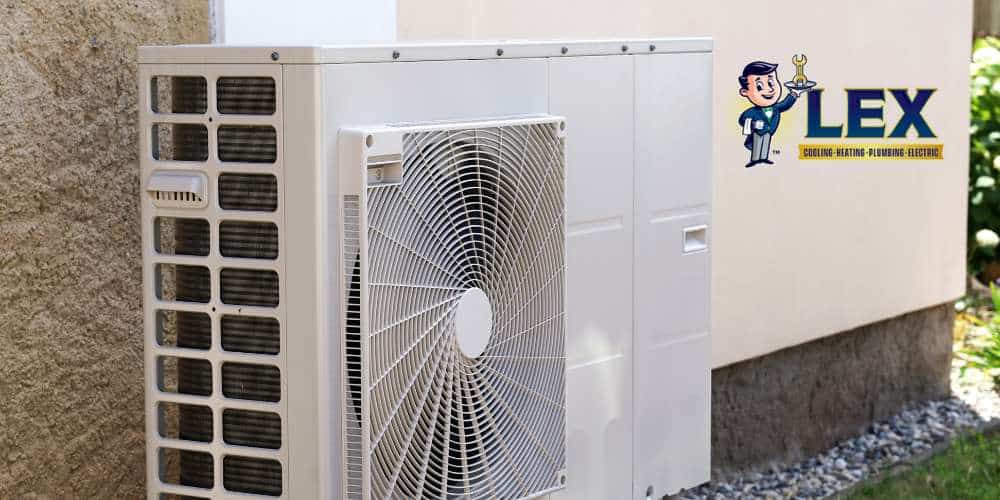
What Does a Heat Pump Look Like?
Heat pumps typically consist of two main components: an outdoor unit and an indoor unit. The outdoor unit, often referred to as the condenser or compressor, resembles a large metal box and is usually located outside of the building. It contains the compressor, condenser coil, and a fan. The indoor unit, known as the air handler, is typically installed inside the building and contains the evaporator coil, blower fan, and sometimes additional components such as supplementary heating elements.
The outdoor unit is usually larger and may have vents or grilles for air intake and exhaust. It is connected to the indoor unit via refrigerant lines and electrical wiring. The indoor unit is usually smaller and can vary in appearance depending on the specific model and installation configuration. It may be mounted on a wall, suspended from the ceiling, or installed within a ductwork system.
Heat Pump vs Furnace
The primary difference between a heat pump and a furnace lies in their method of heat generation. A furnace generates heat by burning fuel (such as natural gas, propane, or oil) or through electric resistance heating, while a heat pump transfers heat from one location to another using electricity. In colder climates, where temperatures drop significantly, furnaces are often preferred for their ability to provide high levels of heat output.
In contrast, heat pumps are more efficient in moderate climates, as they excel at moving heat rather than generating it, making them a cost-effective solution for both heating and cooling needs. According to the Environmental Protection Agency, heat pumps are typically more energy-efficient than most other home heating sources, which can you save money over time.
Additionally, while furnaces only provide heating, heat pumps offer both heating and cooling capabilities, making them a versatile choice for year-round comfort.
Heat Pump vs Air Conditioner
The main difference between a heat pump and an air conditioner lies in their functionality. Both systems cool indoor spaces by removing heat, but a heat pump can also reverse its operation to provide heating during colder months. In cooling mode, both heat pumps and air conditioners work similarly, absorbing heat from indoor air and releasing it outside.
However, when heating is required, a heat pump reverses this process, extracting heat from outdoor air (even in cold temperatures) and transferring it indoors. This dual functionality makes heat pumps more versatile than air conditioners, offering both heating and cooling capabilities in a single system, which can lead to increased energy efficiency and cost savings over time.
So, a heat pump cools and heats a home, while an air conditioner only cools a home. A Tyler AC installation professional at Lex East can install a heat pump system in your home or business.
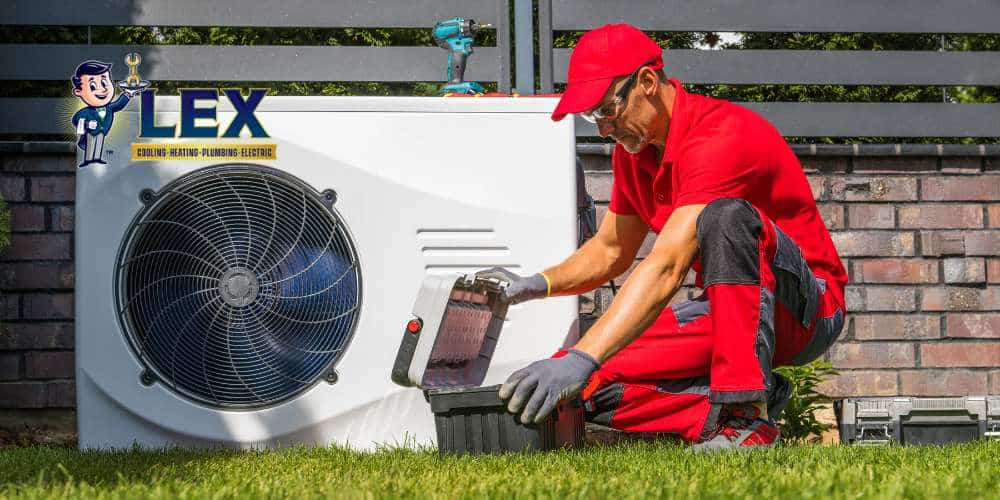
What Does a Heat Pump Do?
A heat pump is a versatile HVAC system that provides both heating and cooling for indoor spaces. Their ability to transfer heat rather than generate it makes heat pumps highly efficient, environmentally friendly, and cost-effective solutions for maintaining indoor comfort year-round. If you’re looking for significant energy savings, heat pumps may be a good option for your home.
How Does a Heat Pump Work?
A heat pump works by transferring heat from one area to another using a refrigeration cycle. In heating mode, the outdoor unit of the heat pump (called the evaporator coil) absorbs heat from the surrounding air. Even in cold weather, there is still heat energy present in the air that the heat pump can extract.
The absorbed heat energy is transferred to the refrigerant circulating within the evaporator coil. As the refrigerant absorbs heat, it evaporates into a low-pressure gas. The compressor, located in the outdoor unit, pressurizes the refrigerant gas, increasing its temperature and energy level.
The hot, pressurized refrigerant gas flows into the indoor unit (the condenser coil), where it releases heat energy into the indoor air. This warms up the indoor space. After releasing heat, the refrigerant passes through an expansion valve. This reduces its pressure and temperature, turning it back into a low-pressure liquid.
The refrigerant cycle continues, with the liquid refrigerant returning to the outdoor unit to repeat the process of absorbing heat from the outdoor air. During the cooling mode, the heat pump reverses this process. It absorbs heat from indoor air, releases it outside, and cools down the indoor space. By utilizing this heat transfer mechanism, heat pumps can efficiently provide both heating and cooling for homes and buildings, which will save money in the long run.
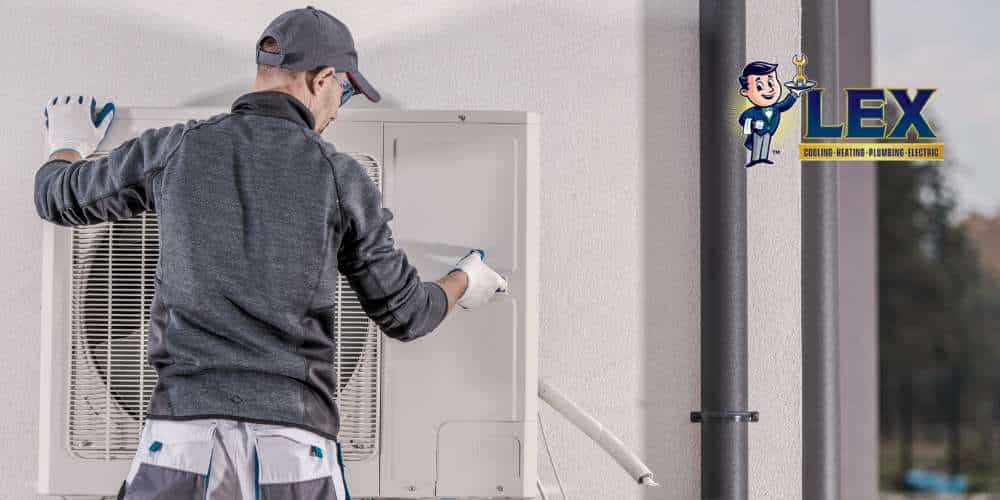
How to Install a Heat Pump
Before we install your new heat pump, one of our technicians will assess your property to determine the appropriate size and type of heat pump you need. We base our recommendation on the size of your space, the insulation levels in your home, and climate conditions.
Once you select a suitable heat pump model, we will prepare the installation site. We do this by clearing the areas around the indoor and outdoor units to ensure adequate space and ventilation.
The indoor unit, including the air handler and evaporator coil, is installed in the designated indoor location. This may involve mounting the unit on a wall, suspended from the ceiling, or placed within a ductwork system. The outdoor unit, containing the compressor, condenser coil, and fan, is installed in an appropriate outdoor location. This typically involves securing the unit on a concrete pad or mounting it on brackets.
Refrigerant lines are then installed to connect the indoor and outdoor units, allowing the refrigerant to circulate between them. The lines are carefully insulated to prevent energy loss and ensure efficient operation.
We install electrical wiring to connect the heat pump to the main electrical panel. This includes wiring for the compressor, fan, and any additional components such as auxiliary heating elements. Once the installation is complete, we test the heat pump system to ensure all components function properly.
Types of Heat Pumps
Heat pump systems come in various types, each designed to suit different installation requirements and environmental conditions. In the following sections, we outline some of the most common types of heat pumps.
One common type is the mini-split heat pump. Mini-split heat pumps consist of an outdoor compressor unit connected to one or more indoor air-handling units via refrigerant lines. Mini-split heat pumps are ideal for homes or buildings without existing ductwork and allow for individualized temperature control in different zones.
Ductless heat pumps are closely related to window heat pumps, which are designed for single-room heating and cooling. They are the same as mini-split heat pumps.
Window heat pumps are self-contained units installed through a window or wall opening. They are popular for their ease of installation and affordability, making them a practical solution for small spaces or as supplementary heating and cooling units.
Electric heat pumps utilize electricity to power the compressor and other components, making them efficient alternatives to traditional oil or gas-fired heat pumps. It works on the principle of heat transfer, moving heat from a source to where it is needed using refrigerant and electrical energy.
Air-source heat pumps extract heat from outdoor air using a refrigerant and transfer it indoors to warm the building. During the summer months, they operate in reverse, extracting heat from indoor air and releasing it outside to cool the indoor environment. They are particularly suitable for moderate climates but can also be effective in colder regions when paired with supplemental heating systems.
Water-source heat pumps are a type of heat pump system that extracts heat from a water source, such as a pond, lake, river, or well water, to provide heating, cooling, and hot water for buildings. Unlike air-source heat pumps, water-source heat pumps utilize the relatively stable temperature of water sources to transfer heat efficiently.
Ground-source heat pumps are highly efficient heating and cooling systems that use the stable temperature of the earth below the surface to provide indoor comfort. They can provide both heating and cooling year-round, making them a versatile solution for homes.
While they require a larger upfront investment for installation than conventional heating and cooling systems, they offer long-term energy savings. They may even qualify for incentives and rebates due to their environmental benefits.
Geothermal heat pumps are the same as ground-source heat pumps. They use the stable temperatures below ground to provide heating and cooling for homes.
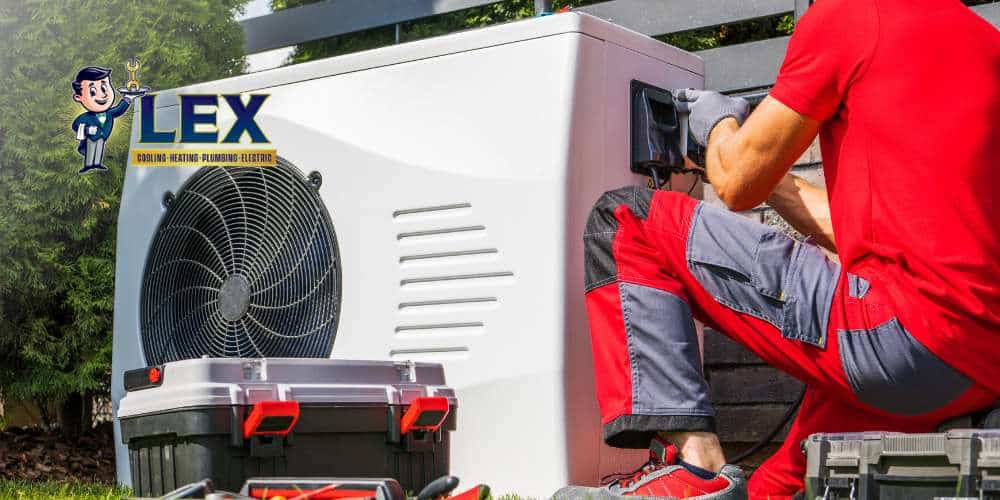
What Size Heat Pump Do I Need?
When determining the appropriate size heat pump for your home, we take into account several factors. These factors include square footage, insulation levels, climate conditions, and your specific heating and cooling needs. We typically begin with measuring the square footage of the area you want to heat and cool.
Then, we examine the level of insulation in your home. Well-insulated spaces require less heating and cooling capacity compared to poorly insulated ones. We also consider the climate. Texas can experience extreme temperatures in the summer and surprisingly cold winters at times, so it’s important for your heat pump to be able to keep up.
Our technicians may also perform a load calculation. A load calculation takes into account the orientation of the building, occupancy levels, appliances, and lighting. The best way to understand which size and type of heat pump is best for you is to speak with one of the experts at Lex Air East Texas. We offer free estimates for those looking to install new heat pumps, or repair or replace existing heat pumps. Contact us today for experienced heating installation in Tyler, TX.
Heat Pump Installation Cost in Tyler, TX
On average, the cost of installing a heat pump typically ranges from $4,000 to $8,000 for a single-family home. Heat pump installation costs vary depending on the size and type of heat pump, the complexity of the installation, and the location and accessibility of the property.
For smaller homes or single-room installations with ductless or mini-split heat pumps, the cost may be on the lower end of the spectrum, starting around $3,000. Larger homes or buildings with more complex installation requirements, such as retrofitting ductwork or installing a ground source heat pump system, can cost upwards of $10,000 or more.
Heat Pump Repair Services in Tyler
The expert HVAC technicians at Lex Air East Texas offer comprehensive heat pump repair services to address any issues you may encounter with your heating and cooling system. We have the knowledge, experience, and tools to diagnose and repair a wide range of heat pump problems efficiently and effectively.
Whether you’re experiencing reduced heating or cooling performance, strange noises, or frequent cycling, you can rely on Lex Air East Texas to provide prompt and reliable HVAC repair services in Tyler, TX, to restore comfort to your space. With our commitment to quality workmanship and customer satisfaction, you can trust us to get your heat pump back up and running smoothly in no time.
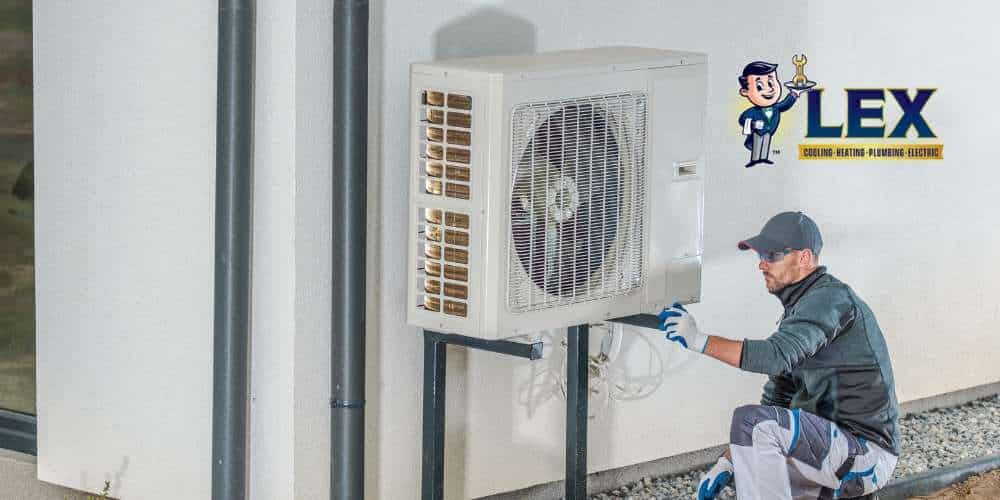
How Long Does a Heat Pump Last?
The lifespan of a heat pump can vary depending on several factors, including the quality of the unit, how well it’s maintained, the type of heat pump, and the frequency of use. On average, a well-maintained heat pump can last between 10 to 15 years. However, some heat pumps may last even longer with proper care and regular maintenance.
How Do I Know If I Have a Heat Pump?
There are a few ways to determine if you have a heat pump system in your home. The easiest way to determine if you have a heat pump is to look up your unit’s brand and model number online. You can find this information on the outdoor unit, usually on an attached metal plate.
You can also look at your heating and cooling system to see if there is a single unit that provides both heating and cooling. Heat pumps are dual-purpose systems that can both heat and cool indoor spaces, so if you have a single unit that serves this function, it is likely a heat pump.
If you have access to the outdoor unit of your HVAC system, examine it to see if it resembles a large metal box with a fan on top or on the side. Heat pumps have an outdoor unit that contains the compressor, condenser coil, and fan, similar to air conditioning units, but they may have additional components such as reversing valves.
Heat pumps often have auxiliary or backup heating systems, such as electric resistance heating or gas furnaces, to provide additional warmth during very cold weather. If you notice electric heating elements or a gas furnace connected to your HVAC system, it may indicate that you have a heat pump.
Why Is My Heat Pump Blowing Cold Air?
If your heat pump is blowing cool air instead of hot or warm air, there are possible reasons for this. Check your thermostat settings to ensure that it is set to “heat” mode and that the temperature is set higher than the current room temperature. If the thermostat is set incorrectly, the heat pump may be blowing cold air in response.
Inspect the outdoor unit of the heat pump to ensure that it is operating properly. If the outdoor unit is covered in ice or snow, it may be experiencing defrosting issues, which can cause the heat pump to blow cold air temporarily.
A dirty or clogged air filter can restrict airflow through the heat pump, causing it to operate inefficiently and potentially blow cold air. Check the air filter and replace it if it is dirty or clogged.
Low refrigerant levels due to a leak in the refrigerant lines can cause the heat pump to blow cold air. If you suspect a refrigerant leak, it’s essential to contact a qualified HVAC technician to inspect and repair the issue.
Faulty components within the heat pump, such as the compressor, reversing valve, or defrost control board, can also cause it to blow cold air. We can diagnose and repair any faulty components to restore proper operation.
What Are the Benefits of Regular Heat Pump Maintenance?
Maintenance is important for any HVAC system, including heat pumps. Regular maintenance can reduce heat pump costs, enhance your comfort, and prolong the lifespan of your HVAC system. Ideally, heat pumps should be serviced at least once a year.
The specific benefits you can expect from heat pump maintenance include the following.
- Improved efficiency
- Extended lifespan
- Consistent heating and cooling
- Prevention of breakdowns
- Improved indoor air quality
- Maintained warranty coverage
What Does Heat Pump Maintenance Include?
Heat pump maintenance typically includes a comprehensive inspection and tune-up of both the indoor and outdoor components of the system. Generally, our technicians do the following during maintenance.
- Inspect and clean air filters
- Check thermostat settings
- Inspect and clean coils
- Inspect and lubricate moving parts
- Check refrigerant levels
- Inspect and tighten electrical connections
- Inspect and clean condensate drains
- Test system controls
- Check ductwork
Ideally, you’ll want to schedule your heat pump maintenance before the start of the heating and cooling seasons. This will help keep your heat pump in optimal condition. If you’re looking to keep your heat pump functioning as optimally as possible for as long as possible, schedule regular HVAC maintenance with Lex Air East Texas through our Tyler HVAC maintenance plan.
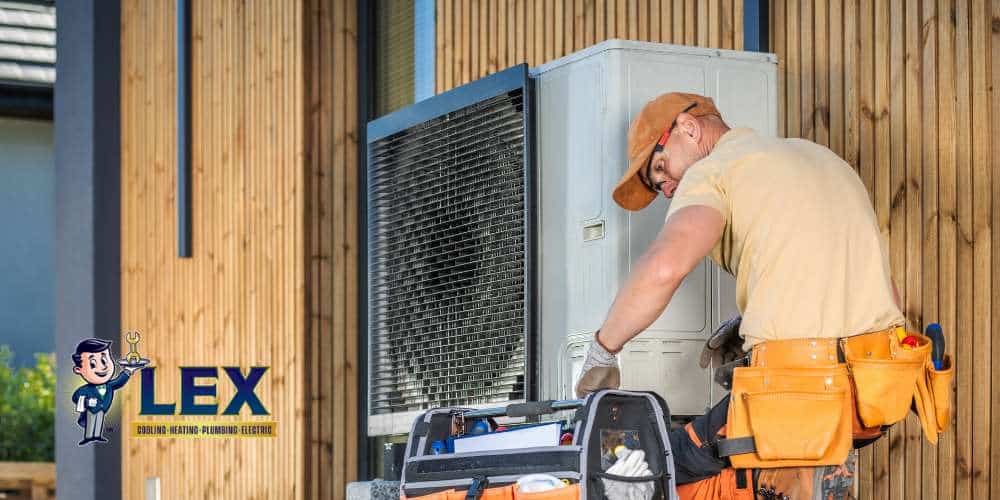
Contact Heat Pump Installation and Repair Experts at Lex Air East Texas
At Lex Air East Texas, we are dedicated to providing top-quality heat pump installation and repair services to our valued customers in Tyler, TX, and surrounding areas. With years of experience and a commitment to excellence, our team of skilled technicians ensures that your heating and cooling needs are met with precision and professionalism.
Whether you need a new heat pump installation to upgrade your HVAC system or require prompt repairs to restore comfort to your home or business, you can trust Lex Air East Texas to deliver reliable solutions tailored to your specific requirements.
Call us today at (903) 650-9636 or contact us online to learn more about our services and to schedule your free estimate.
Tyler’s AC Contractor Dedicated to Doing it The Right Way. Always.
For over a decade, Lex Air East Texas has been dedicated to providing high-quality and affordable HVAC services to the Tyler, TX, community.
We believe in doing things the right way, which has helped us get a reputation as one of the most effective AC companies in the Tyler, TX, area.
When a Lex East technician is at your home, you can always expect quality service–but you can also expect the kind of service you’d expect from a family-owned & operated business. We think that’s the right way to do business.
SCHEDULE YOUR FREE ESTIMATE
Special Financing Options Done Right
Air conditioners don’t always break down when it’s convenient. Lex Air East Texas offers a variety of options should you need them.
We accept most major credit cards for larger purchases and repairs, and we also have special financing options available to ensure you get the repairs you need when you need them.
View our financing options today, or call us to speak with a representative about how we may be able to help you.
*Subject to credit approval
The Lex East Difference
24/7 Emergency Service
If your heating & air conditioning system goes down in the middle of the night, you may actually be in trouble. That’s why we provide 24/7 emergency services.
Certified Technicians
Our Lex Air East Texas technicians are NATE-certified and dedicated to ensuring each of our clients is completely satisfied with their work.
Flat Rate Pricing
When you hire Lex Air East Texas, you can expect flat-rate and upfront pricing. We won’t surprise you with hidden fees or labor costs on your final bill.
Free Estimates
Our technicians provide free estimates on all work. We’re also available should you need a second opinion on a quote from another HVAC company.
